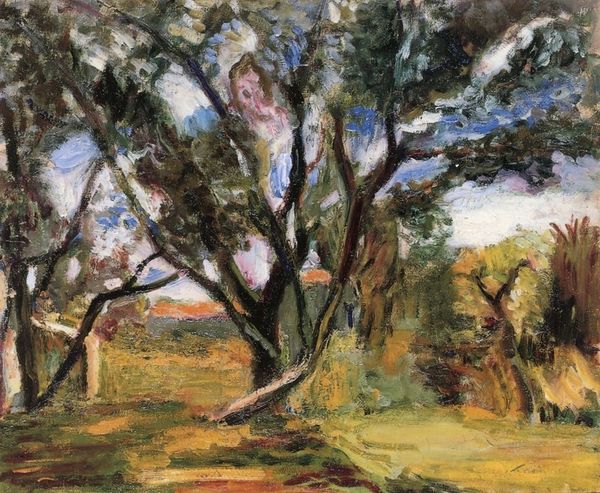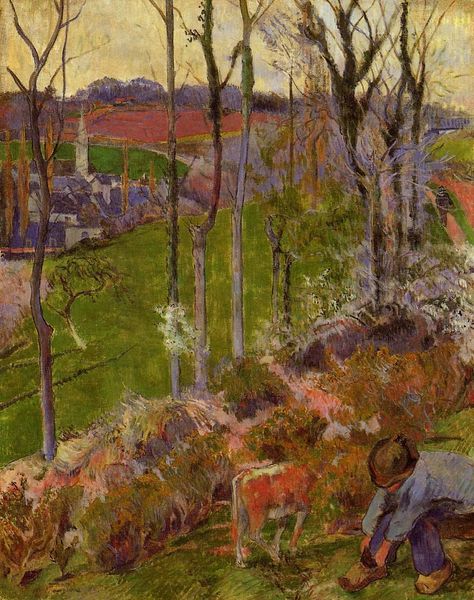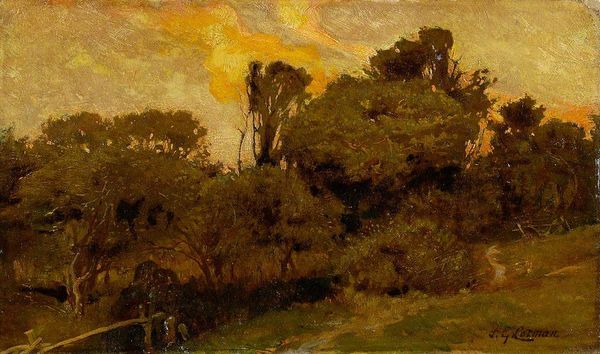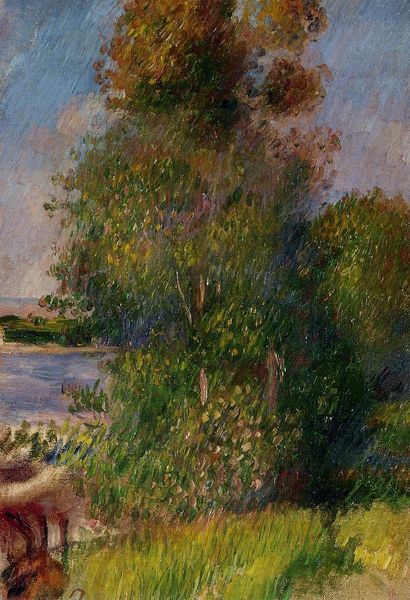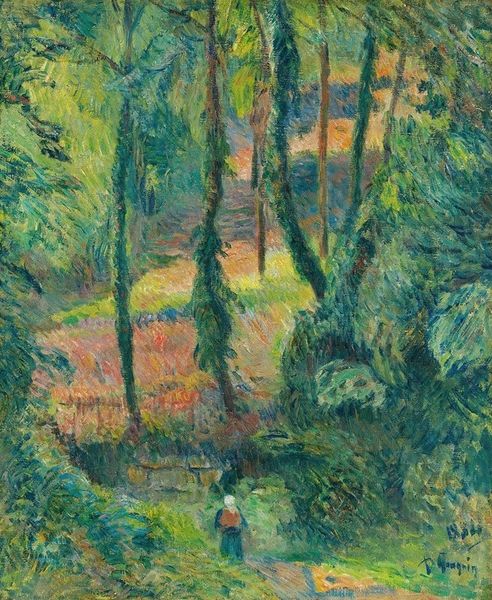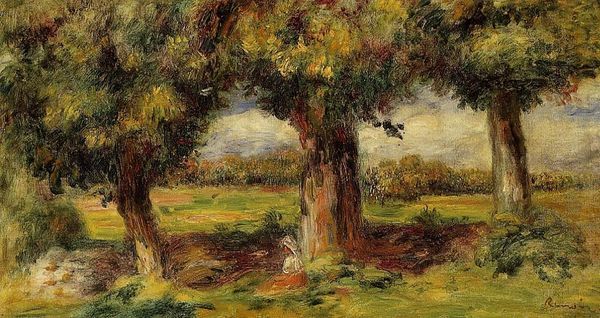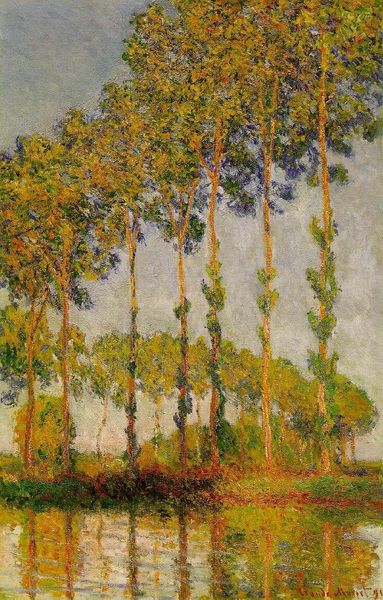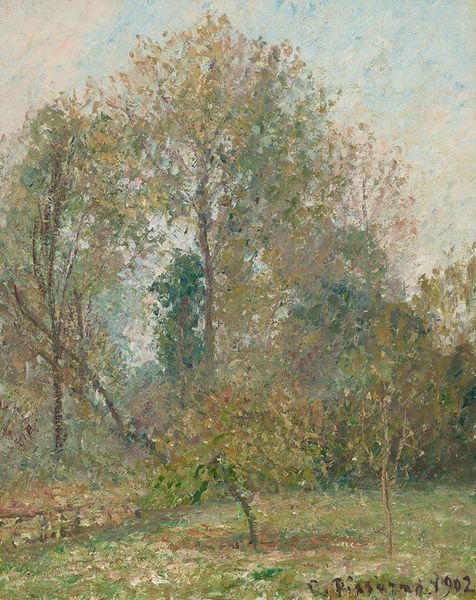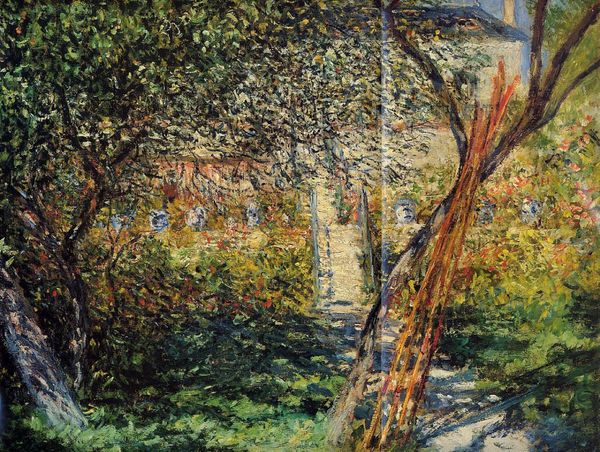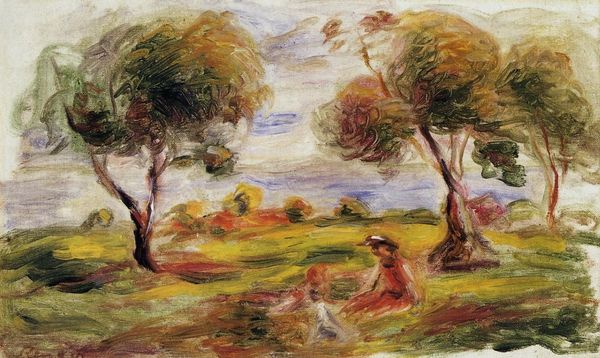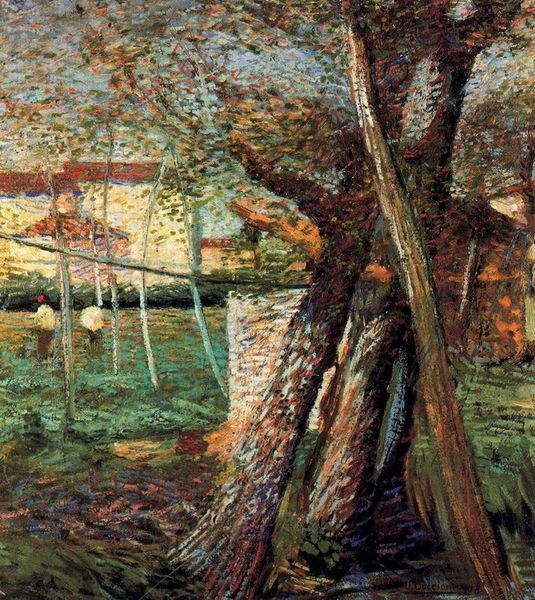
Copyright: Public domain
Editor: So, here we have Paul Gauguin’s "Bare Trees," painted in 1885. It's an oil painting, and I’m struck by how the stark trees create a sense of almost haunting beauty. It feels so different from the bright Tahitian scenes he's known for. What's your take on this, what do you see here? Curator: It sings to me of solitude. There’s a melancholic melody woven into the brushstrokes. Notice the way the light filters through the branches – not with optimism, but with a quiet pensiveness. It reminds me of a stanza by Emily Dickinson. She wrote: "There's a certain Slant of light, / Winter Afternoons – / That oppresses, like the Heft / Of Cathedral Tunes –." I wonder, can you feel that heft here too? Editor: I think I do! It’s interesting because the colours aren’t necessarily dark or gloomy, but the overall effect is definitely contemplative. What about Gauguin's later move away from Impressionism – do you see hints of that here? Curator: Absolutely! While the influence of Impressionism lingers in the broken brushwork, we already see Gauguin forging his path towards simplification of form and a heightened emotionality. Those tree trunks, almost stark in their verticality, aren’t just trees; they're vessels of feeling. They whisper of a spiritual connection with nature. It's like he's trying to capture the very essence of being, distilled into the simplest of forms. What is really "bare" about these trees? Editor: So, less about capturing a literal scene, and more about expressing an inner world. It’s amazing to see this shift happening right before our eyes in this work. Curator: Precisely! And for me, that makes it such a moving piece. I leave it asking what parts of me I keep bare, in nature or with my relations? Editor: This has definitely given me a fresh perspective, that even within nature there's always something going on below the surface.
Comments
No comments
Be the first to comment and join the conversation on the ultimate creative platform.
